This is not the place to find a scholarly review of Impressionism in America; rather, it’s about my impressions from a small exhibition at Boston’s Museum of Fine Art.
I’m not an art expert, although years of touring museums and collecting art books certainly let me sound like one from time to time. And, of course, like everyone else, I have favorite periods and painters and prejudices.
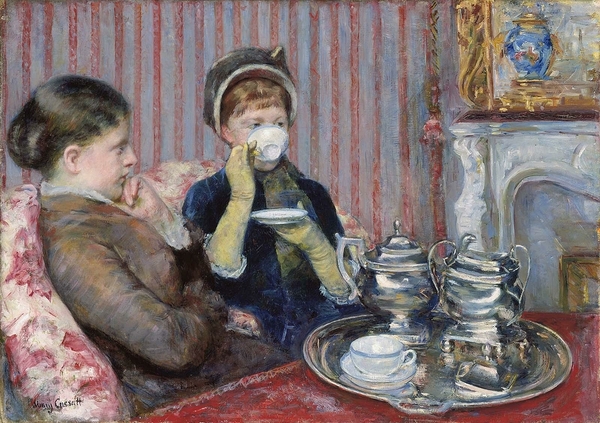
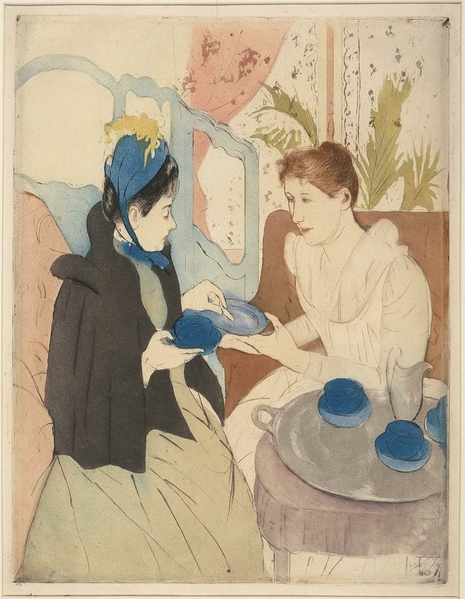
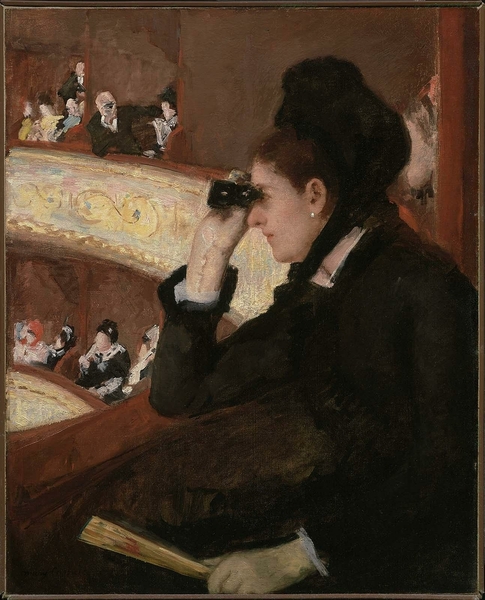 Three by Mary Cassatt, a real "American in Paris." Two of the paintings, ten years apart, are called 'The Tea." The other, 'In the Loge' shows an increasingly independent role for women of status.
Three by Mary Cassatt, a real "American in Paris." Two of the paintings, ten years apart, are called 'The Tea." The other, 'In the Loge' shows an increasingly independent role for women of status.
For my wife and I, the 19th century in France was often the center of our interest, watching the changes in styles and subjects as the century developed, and with a particular interest both in Impressionism, and in the influence of Paris training on artists all over.
One of our favorite things to do, in different countries, has been visiting the local ‘national’ gallery to see what the artists of Spain, Poland, Sweden, wherever were doing in that period, to see how much ‘national’ style and feeling shows through the influence of France.
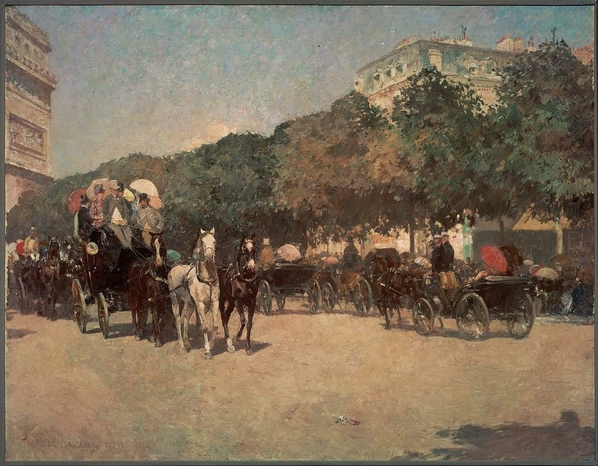
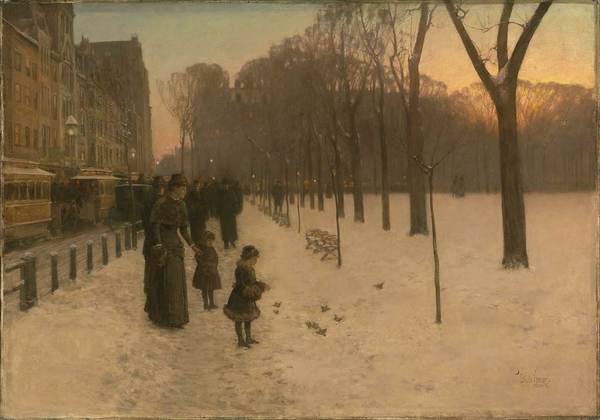
Childe Hassam's paintings include busy scenes in both France and the U.S., with Grand Prix Day in Paris and "Dusk," a scene on Boston Common, possibly pre-saging "Make Way for Ducklings." "The Charles River and Boston," our title image is less busy, and substitutes the State House dome for a burst of sun.
But we seldom really applied that lens when visiting museums in the U.S.; we went to different exhibitions, to general collections, to retrospectives, without often asking that question: What were American artists doing in that period. We mostly viewed American art movements, including the Hudson River School, as opposed to rather than connected with European trends.
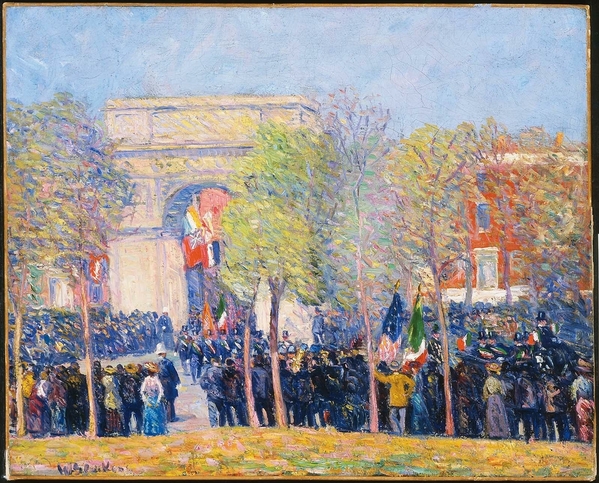
A New York scene by William James Glackens depicts change and aspiration, with an "Italo-American Celebration, Washington Square," as immigrant groups highlight attempts at assimilation into American society
But a recent visit MFA visit forced me into a re-think. A small exhibit of American Impressionists revealed much more than I thought I knew. Of course, I knew that some Americans trained in France and took part in the Impressionist movement; Mary Cassatt and Childe Hassam, for a start.
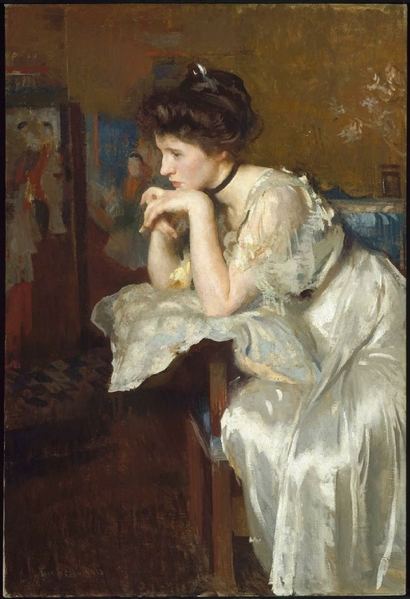
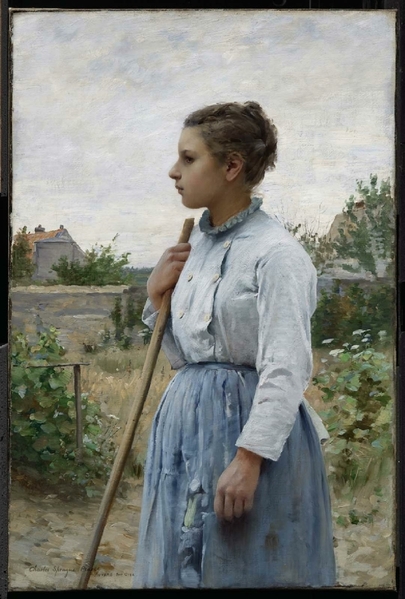
Class was an issue; many of the Americans painted mainly a rising wealthy class, but Charles Sprague Pearce, who worked mainly in France but sold to Americans, included peasants. At left, 'Reverie' by Edmund Tarbell
And I knew of the colonies of young American artists who worked for a time in the shadow of Monet—one critic in the 1880s said "They have gotten the blue-green color of Monet's Impressionism, and they have got it bad." I realize now that in my mind they were Americans painting in France, not American artists, with deep connections to art in America.
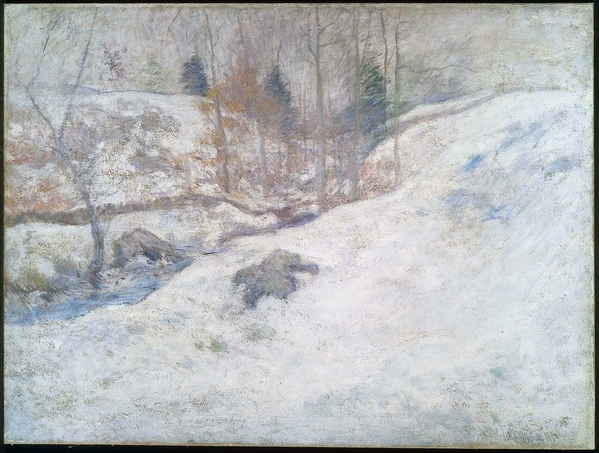
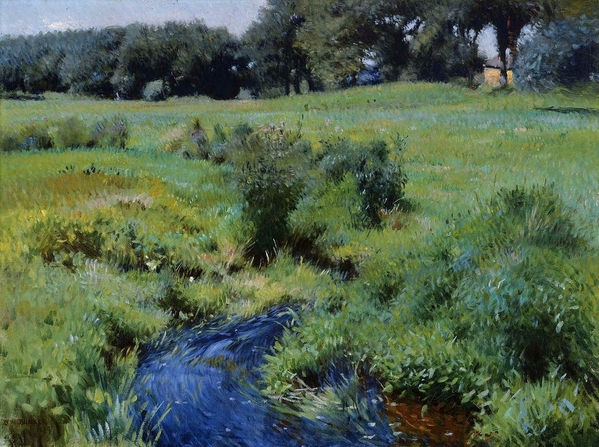
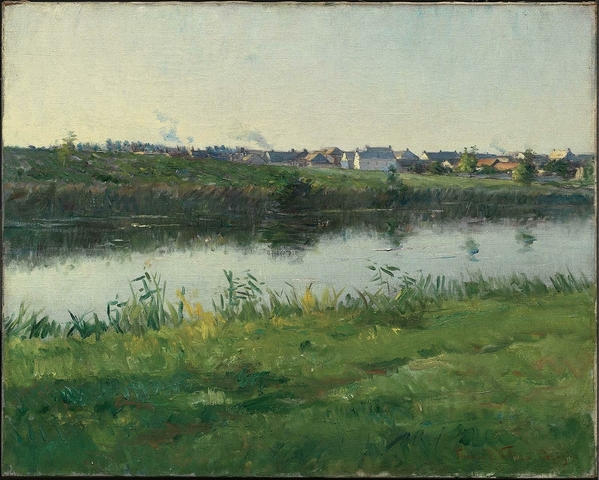
Three landscapes, two in New England and one in France, by Americans. 'Brook in Winter' is by John Henry Twachtman, and 'Pool at Medfield' is by Dennis Miller Bunker. 'The Loing River at Grez' is by Frederic Porter Vinton.
For some that was true; Mary Cassatt worked in France her entire career. But others, such as Childe Hassam worked in France and returned, and two of the returnees in particular, Frank Weston Benson and Edmund Tarbell, became leading teachers at the MFA's School of Fine Arts, and helped make the style even more American, blending in elements of other styles.
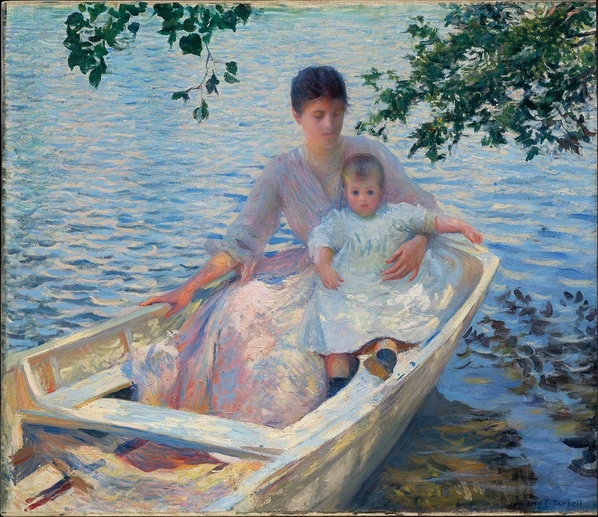
This painting by Tarbell, for example, uses broad Impressionist strokes and color for everything except his wife and child, and the upper part of the dress.
Benson also often painted his family, including his wife Eleanor and his children, but with a more straightforward adhesion to Impressionist styles. The standing portrait of Eleanor reminds me of some of Monet's portraits of his wife Camille with a parasol.

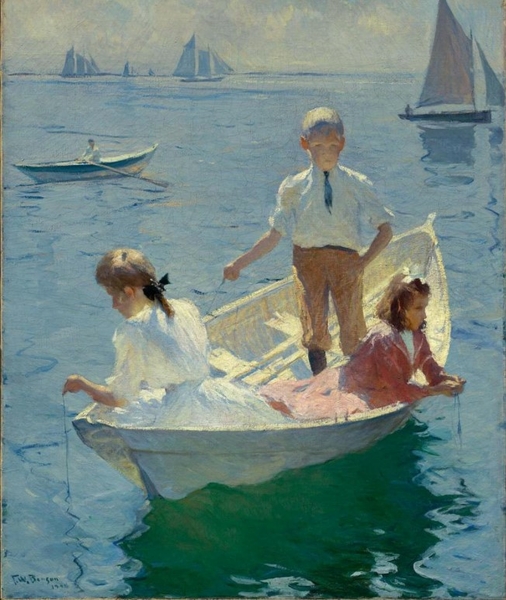
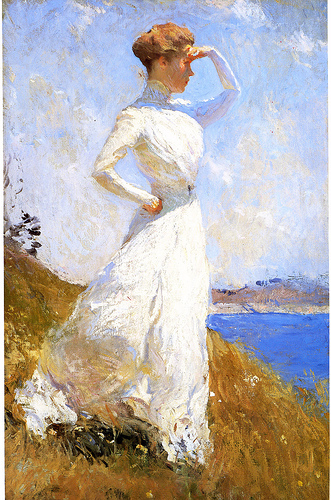
 William Merritt Chase's wife Alice, seen in a mirror and from behind in the aptly-titled 'Reflection,' which one critic called 'a pun in paint.'
William Merritt Chase's wife Alice, seen in a mirror and from behind in the aptly-titled 'Reflection,' which one critic called 'a pun in paint.'
The American Impressionists remained a force and influence in the U.S. long after the style's hey-day in France, in part perhaps because it came later to America and in part perhaps because it embedded itself with other elements as well. This 'Springtime in France," is said to be influenced by Japanese woodblocks and abstraction.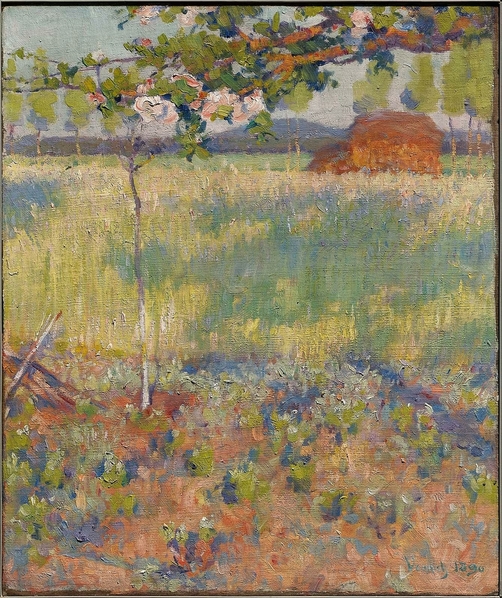
'Pigeon,' by John Sloan, a leader of the so-called Ashcan School, reflects the Impressionist focus on light. Sloan found the right 'pre-sunset glow' only lasted for about twenty minutes, and interrupted his other work each day to work on this one.
And a last painting, by William L. Lathrop. Like the Sloan, it's not part of the MFA exhibit. Lathrop was among the very-late movement of Pennsylvania Impressionists who worked mostly in Bucks County after 1915, after the 1913 Armory Show in New York made 'modern' the word and pushed aside older styles. Some of the Pennsylvania group continued into the 1950s. A good collection of their work is at the Michener Museum in Doylestown, PA.
Image note: because my own images of the MFA paintings are not 'square-on' and free of reflection, I have used downloaded images from MFA and Wikimedia Commons, both excellent places to browse for more information.

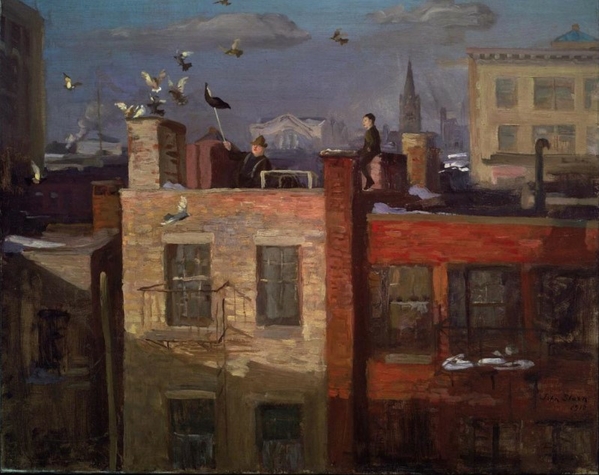
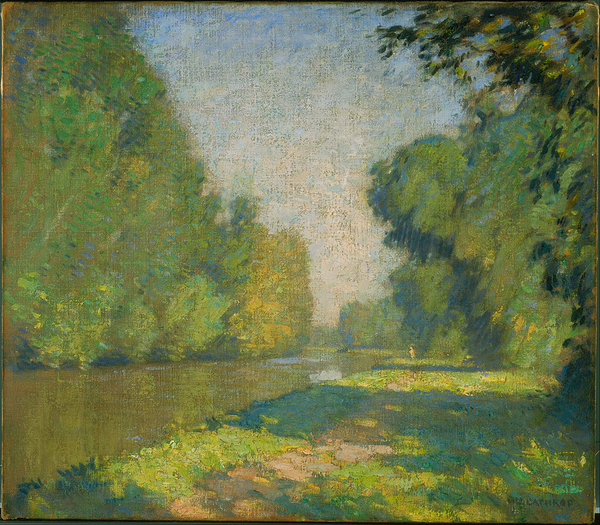
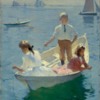

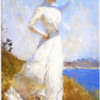
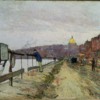













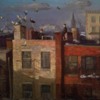
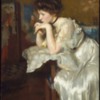

Comments (0)